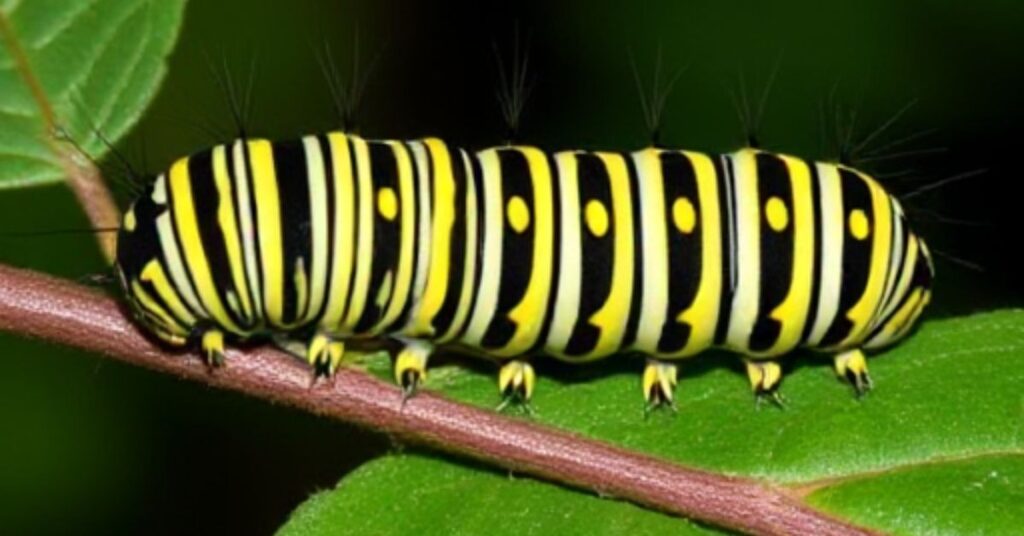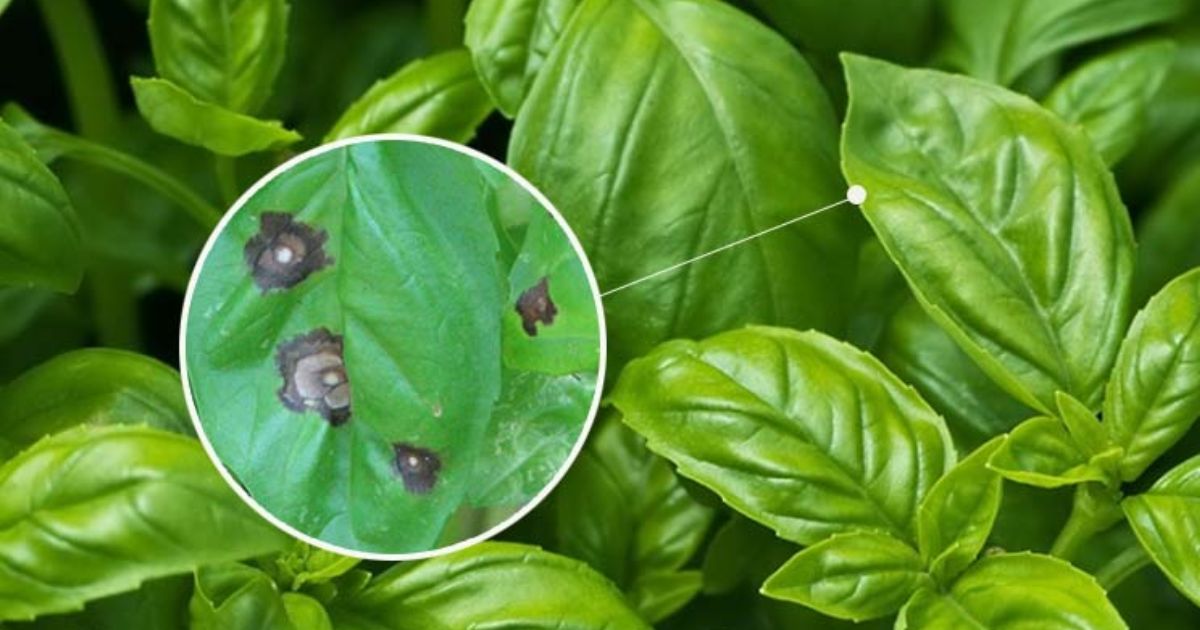Have you ever spotted a caterpillar with bold, colorful stripes and wondered if it’s safe to touch? Striped caterpillars are fascinating creatures, but their unique patterns often spark curiosity and concern. These striking designs can be a warning sign, a disguise, or a work of nature’s artistry. Understanding these creatures is vital, as some are harmless, while others might pack a surprising punch with venomous spines or irritating hairs. Let’s dive into the world of striped caterpillars and uncover how to identify them safely.
The Role of Stripes in Nature
Stripes in nature are more than just eye-catching patterns—they serve essential purposes for survival, communication, and adaptation. From the bold stripes of a zebra to the delicate lines on a caterpillar, these patterns are evolutionary tools that help organisms thrive in their environments.For striped caterpillars, these markings often serve as a form of defense. Brightly colored stripes, especially those in high-contrast combinations like black and yellow or black and white, act as warning signals to potential predators. This phenomenon, called aposematism, indicates that the caterpillar may be toxic, distasteful, or dangerous to eat. Even non-toxic species sometimes mimic this pattern to deter predators, a clever survival tactic known as Batesian mimicry.
Stripes also help some species blend into their surroundings. Specific striped patterns in caterpillars allow them to camouflage among grasses, stems, or leaves, Top 10 Mistake When You Plant Milkweed making them less visible to predators like birds or insects. This adaptation benefits species that rely on stealth to avoid becoming a meal.Beyond defense, stripes may also regulate temperature or signal social behavior within a species. In many cases, these patterns combine protective strategies designed to enhance survival in the wild. The presence of stripes in nature is a testament to the ingenious ways life evolves to adapt and endure.
Types of Striped Caterpillars and Their Safety
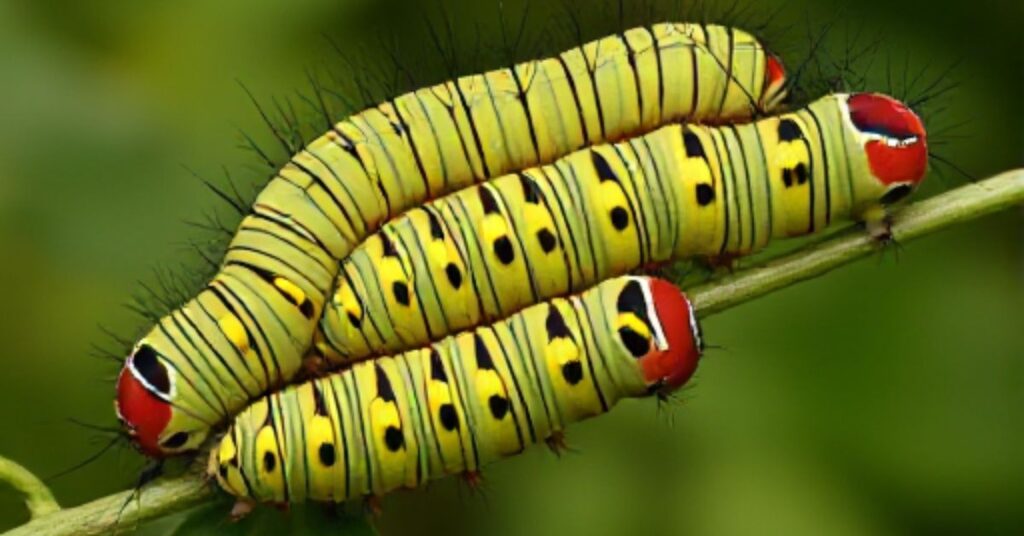
Common Striped Caterpillars
Let’s begin with the more familiar striped caterpillars you might encounter in gardens or parks:
- Monarch Caterpillar: Recognized by its black, white, and yellow stripes, this caterpillar feeds on milkweed and is entirely harmless.
- Zebra Caterpillar: Known for its alternating black and white stripes, it’s another safe species that feeds on leafy plants.
- Cinnabar Moth Caterpillar: Sporting bold black and orange stripes, this caterpillar often feeds on toxic ragwort, but it poses no danger to humans.
Venomous or Dangerous Striped Caterpillars
While most caterpillars are harmless, a few striped species can cause irritation or even harm:
- Saddleback Caterpillar: This tiny green caterpillar with a brown “saddle” pattern has venomous spines that cause painful stings.
- Io Moth Caterpillar: Covered in venomous spines, How to Choose Deer Resistant Plants this fuzzy green caterpillar with stripes along its body can cause a painful rash.
- Hickory Tussock Moth Caterpillar: Its black and white striped body is lined with hairs that irritate skin and trigger allergic reactions.
Harmless Striped Caterpillars
Many striped caterpillars are entirely safe to observe and even handle gently:
- Eastern Tent Caterpillar: This species, which has a distinctive white stripe down its back, is common in the spring and harmless to humans.
- Tiger Swallowtail Caterpillar: This green caterpillar develops stripes and is completely non-venomous as it matures.
- Black Swallowtail Caterpillar: This caterpillar, sporting green and black stripes with yellow spots, is a joy to watch and safe.
How to Identify Striped Caterpillars
Striped caterpillars are fascinating but can be tricky to identify due to their variety of patterns, colors, and sizes. To determine a striped caterpillar, start by observing its physical characteristics. Look at the number and orientation of the stripes. Are they horizontal, vertical, or diagonal? Take note of the colors—common combinations include black, yellow, green, and white. These stripes can often be a warning sign, How Far Apart to Plant Strawberry as some caterpillars use them to signal toxicity or lousy taste to predators.
Next, examine the caterpillar’s size and body shape. Some species are long and smooth, while others may have spines, bristles, or bumps. Pay attention to its habitat also; striped caterpillars can often be found on specific host plants, such as milkweed for monarch caterpillars or tomato plants for hornworms. Time of year is another clue—certain caterpillars only appear in particular seasons.Lastly, check for unique features, such as a horn-like structure or bright spots. You can use field guides or apps to cross-reference your findings if unsure. Identifying striped caterpillars can be fun and educational, but some may irritate your skin, so handle them carefully or avoid direct contact!
Interacting with Striped Caterpillars
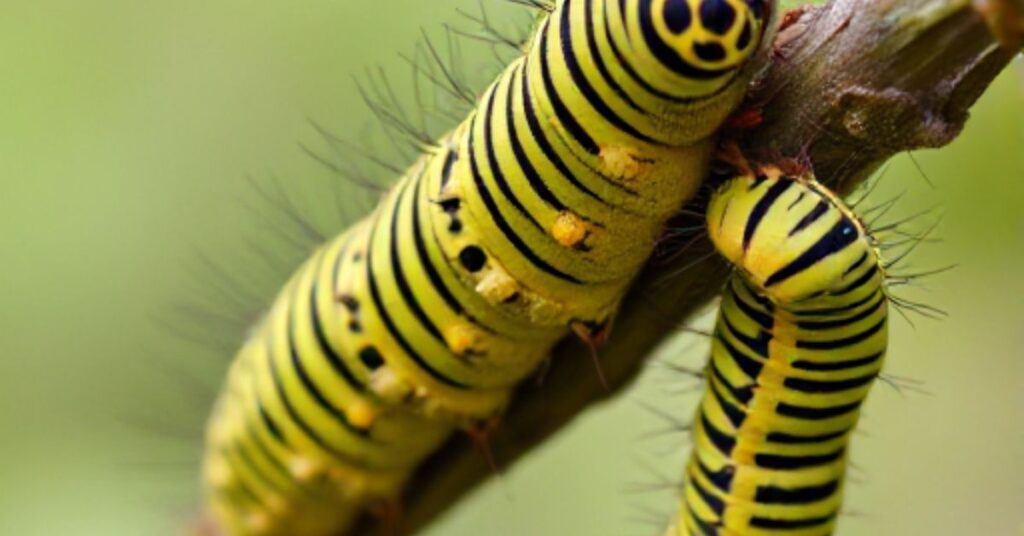
Interacting with striped caterpillars can be a fascinating experience, but it’s essential to approach them with care. Many caterpillars with bold stripes, such as the monarch caterpillar or the black swallowtail, are harmless and safe to observe up close. However, some species, like the saddleback or io moth caterpillars, have venomous spines that can cause irritation or a painful sting. Identifying the species beforehand is crucial for safe interaction.If observing striped caterpillars in the wild, gently examine their behavior without disturbing their natural environment. Caterpillars often rely on their host plants for survival, so avoid removing them unnecessarily. If you must handle one, What Are Basil Black Spots use a soft brush or gloves to prevent accidental contact with irritating hairs or toxins.
caterpillar yellow black stripes are delicate creatures, so avoid squeezing or applying too much pressure when handling them. Washing your hands after any interaction is also helpful to prevent transferring potential irritants to your skin or eyes. For children or curious onlookers, supervising their interaction is key to ensuring safety.Remember, striped caterpillars play a vital role in the ecosystem, transforming into beautiful butterflies or moths. Treat them respectfully, and you’ll enjoy a safe and educational encounter!
The Importance of Caterpillars in Ecosystems
orange and black striped caterpillar play a crucial role in ecosystems, acting as primary consumers and a vital link in the food chain. Herbivores consume large amounts of plant material, which helps regulate plant growth and promotes biodiversity. This feeding activity can also stimulate plants to grow more vigorously and produce seeds, contributing to healthy vegetation cycles.Beyond their role as plant consumers, caterpillars are a critical food source for many predators. Birds, reptiles, amphibians, and even small mammals rely on caterpillars to nourish themselves, tomatoes splitting especially during breeding seasons. For example, baby birds depend heavily on the protein-rich diet provided by caterpillars for healthy development.
Caterpillars also contribute to pollination, albeit indirectly. As they develop into butterflies or moths, these adult forms serve as pollinators, helping plants reproduce and maintain ecosystems. Additionally, caterpillars serve as indicators of environmental health. A diverse and thriving caterpillar population suggests a balanced and healthy ecosystem.Caterpillars are nature’s multitaskers. They support plant growth, sustain predators, and pave the way for essential pollinators. Protecting these small yet significant creatures ensures the balance and survival of many interconnected species within the ecosystem.
Striped Caterpillars: Fun Facts and Trivia
Striped caterpillars are full of surprises, and these fascinating facts highlight their uniqueness!Did you know many striped caterpillars use their patterns as survival tactics? Species like the monarch caterpillar display bold black, yellow, and white stripes to warn predators that they are toxic due to the milkweed they consume.Some striped caterpillars mimic more dangerous species to trick predators. For instance, harmless caterpillars might imitate the stripes of toxic ones, creating an effective illusion of danger!
A fun fact is that caterpillars grow incredibly fast—some species can increase their body mass by up to 1,000 times before pupating. They achieve this by eating almost constantly.Finally, stripes aren’t just for show. Some caterpillars’ patterns help them blend perfectly into their environment, rendering them almost imperceptible to predators. These little striped wonders are nature’s way of combining beauty with survival genius!
How to Attract and Protect Striped Caterpillars in Your Garden
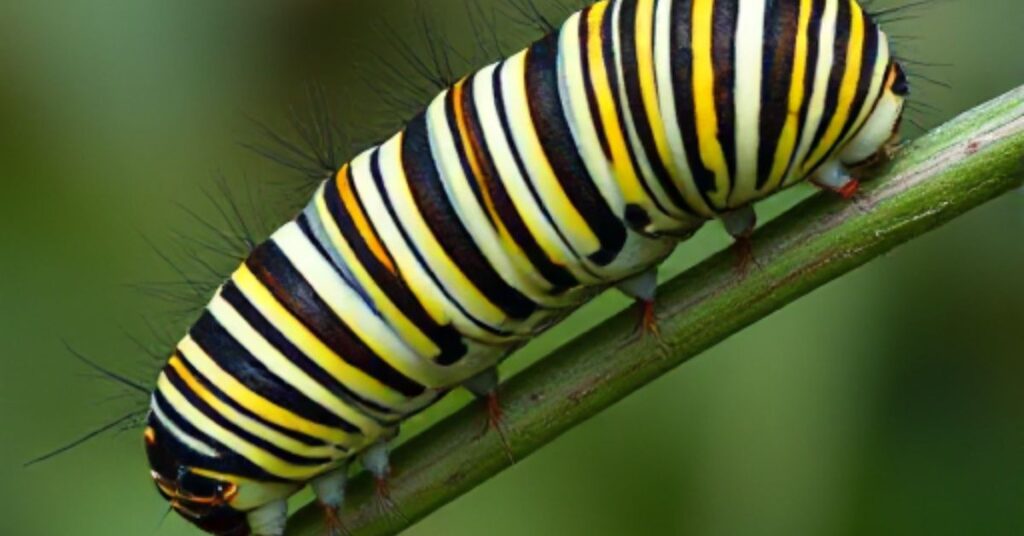
Creating a garden that attracts and protects striped caterpillars is a rewarding way to support biodiversity and help these fascinating creatures thrive. Caterpillars are an essential part of the ecosystem, and by providing them with the right environment, you can ensure their survival while enjoying their presence in your garden. Here’s how:
1. Plant Caterpillar-Friendly Host Plants
The most crucial step in attracting striped caterpillars is to grow their preferred host plants. Different species of caterpillars are associated with specific plants. Monarch caterpillars, for instance, only consume milkweed. while black swallowtail caterpillars prefer dill, parsley, and fennel. Research the striped caterpillars native to your region and plant the right host species for them.
2. Provide a Variety of Nectar Plants
While black and yellow striped caterpillar feed on host plants, their adult forms—moths and butterflies—require nectar for sustenance. Plant various flowering plants throughout the growing season to support the entire life cycle. Species like zinnias, lantanas, and coneflowers are excellent nectar sources.
3. Avoid Using Pesticides
Pesticides and herbicides can harmyellow white black caterpillar and destroy the plants they depend on. To create a haven, avoid chemical sprays and use natural methods to control pests. Companion planting and introducing beneficial insects like ladybugs can help manage harmful pests without endangering caterpillars.
4. Create Shelter and Resting Areas
caterpillars black with yellow stripes and their adult forms need places to rest and pupate. Incorporate shrubs, tall grasses, and leaf litter into your garden to provide shelter. You can also leave areas of your garden undisturbed to allow caterpillars a safe place to form chrysalises.
5. Ensure a Chemical-Free Water Source
Provide a shallow dish of fresh water with a few rocks or sticks for black and white striped caterpillar and butterflies to rest on. Avoid chlorinated or treated water to keep it safe for these delicate creatures.
6. Embrace a “Messy” Garden Approach
Overly manicured gardens may not be ideal for caterpillars. A “messy” garden with native plants, fallen leaves, and natural debris offers a more suitable habitat. Caterpillars often hide in these areas to avoid predators.
7. Protect Caterpillars from Predators
While black with yellow striped caterpillar are a natural part of the food chain, you can protect them by providing lots of hiding places, like thick vegetation or netted enclosures. Be cautious with bird feeders, as birds may also prey on caterpillars.
8. Learn to Identify Caterpillars
Understanding the yellow and black striped caterpillar in your area can help you distinguish between beneficial and harmful species. This knowledge ensures you protect the right ones and manage the potentially destructive ones responsibly.
9. Encourage Native Plants
Native plants are adapted to the local area by nature and are frequently the best hosts for native striped caterpillar. They require less maintenance, attract more pollinators, and provide the right resources for thriving striped caterpillars.
10. Educate Others
Encourage neighbors, friends, and family to join your efforts in creating caterpillar-friendly spaces. A community approach increases the habitat available for caterpillars and ensures their survival on a broader scale.
Following these steps, you can turn your garden into a sanctuary for yellow and black striped caterpillar, supporting their life cycle and contributing to a healthier, more vibrant ecosystem. In return, you’ll enjoy the beauty of moths and butterflies and the satisfaction of helping nature thrive.
Conclusion
striped caterpillars are more than just visually striking insects—they play a vital role in the ecosystem as plant consumers, prey, and future pollinators. We can appreciate these fascinating creatures more deeply by understanding their behavior, unique patterns, and ecological importance. Creating a safe and welcoming habitat for black with yellow striped caterpillar in your garden supports their survival and contributes to biodiversity and the environment’s health.
Whether planting host plants, avoiding pesticides, or learning to identify local species, small actions can make a big difference in protecting these remarkable insects. black and white caterpillar remind us of the intricate connections within nature, teaching us that even the smallest creatures have a significant role to play. By fostering a sense of curiosity and care for these creatures, we can ensure their beauty and ecological benefits continue to thrive for generations.
FAQ
What makes a striped caterpillar dangerous?
Some striped caterpillars have venomous spines or irritating hairs that can cause stings or rashes.
How can I tell if a striped caterpillar is venomous?
Look for spines, bristles, or warning colors like bright orange, red, or yellow.
Are striped caterpillars more common than solid-colored ones?
Yes, stripes are a common adaptation for camouflage or warning purposes in many caterpillar species.
How do I treat a sting or rash from a caterpillar?
Wash the area with soap and water, apply a cold compress, and take an antihistamine if needed.
Can I raise striped caterpillars into butterflies or moths?
Absolutely! You can watch these caterpillars transform into stunning butterflies or moths with the right host plants and care.

